Pax Nova is a new 4X game with land-space hybrid gameplay. It’s an enjoyable game, but its innovation is not as groundbreaking in practice as it sounds in theory.
Type: Single-player, Multi-player
Genre: Turn-Based, Strategy, 4X, Space
Developer: Grey Wolf Entertainment
Publisher: Iceberg Interactive
Release date: April 28, 2020


Introduction
Pax Nova is a 4X game that mixes up space and land based gameplay, perhaps a spiritual sucessor to Emperor of the Fading Suns.
Rather than merely conquering THE world, now you can conquer ALL worlds. It plays more or less like other 4X games like Civ, only spread out throughout a galaxy with as many planets to conquer and colonize as you want.
Caveat
This is the first 4X game I play to any significant degree, so the review is likely more useful to newcomers to the genre rather than veterans.
I have played no multi-player and played a couple of normal single-player games. I got my ass handed to me in the first, probably because I didn’t really know how any of the systems worked.
The second game went much better, though the difficulty was concentrated in the early-mid game, after which point the AI stopped being competitive and it was a (slow) cruise to the win.
I can’t really judge the balance of the game, especially in comparison to other 4X games. I enjoyed my time with it, for the most part, but keep in mind that most reviewers find it much shallower than
other 4X games, due to poor balancing.
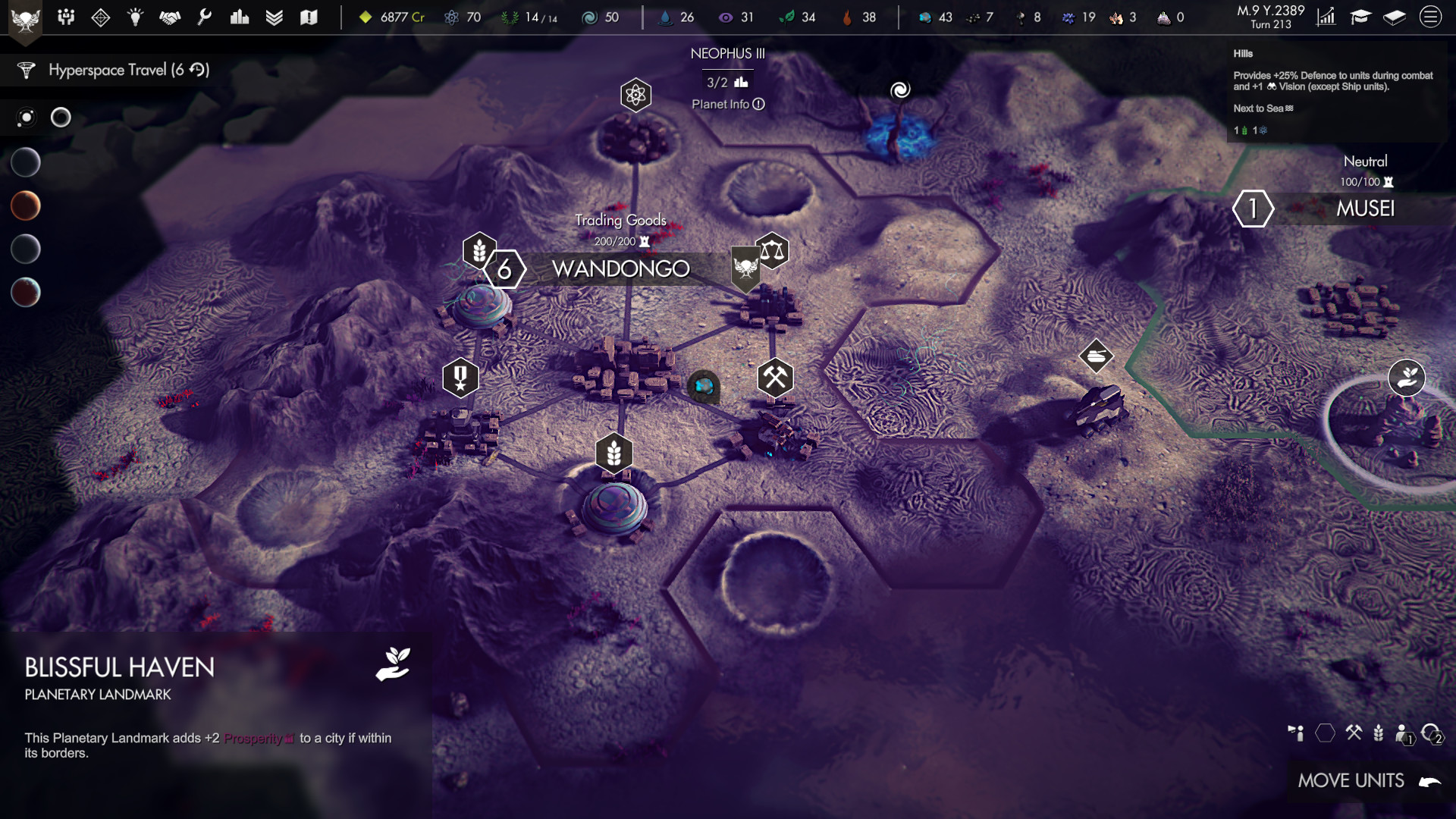
Rule Complexity vs. Play Complexity
I want to add a small note about the game’s complexity. I distinguish between rule complexity – how many rules and mechanics the game has and you need to learn – and play complexity – how many of those rules actually play a role
in your average experience with the game and how complexly they relate to each other.
Checkers, chess and go are examples of very low rule complexity with huge play complexity. The rules are very simple to learn, but game vary drastically and there is a lot of depth to strategies and so on.
Pax Nova seems an example of almost overwhelming rule complexity (especially for new-players, but perhaps not so to players experienced in 4X games; from what I’ve read, the game uses a fairly traditional basis of rules) but
play complexity is nowhere near as high.
This may be due to the AI, but many of the game’s systems had a very negligible effect in my experience – namely the economy and the space layer.
Economy
The main problem I had with the game, mechanically, was how the economy is largely driven by the number of cities and breaks the game open fairly early on – at least against the AI.
As you can see in the pictures below, the AI stops founding new cities fairly early on – and at that point I had won, effectively. Once I had more money, I could build military bases all over the galaxy, produce tons of strong units and use money to speed up their production (instead of relying on the game’s labor-as-a-resource system).
This excess of money also spilled over to every other resource – it suddenly became easy to buy Influence from other factions (a resource needed for diplomacy and declaring wars). I could buy alliance or non-aggression pacts. And so on.
This is unlikely to happen in multiplayer – however, I can imagine a race to get the highest number of cities going which can get really high. I easily reached 20 cities without trying, and playing on a small galaxy – I can imagine reaching 50 or more cities which will make slow each player’s turn to a crawl.
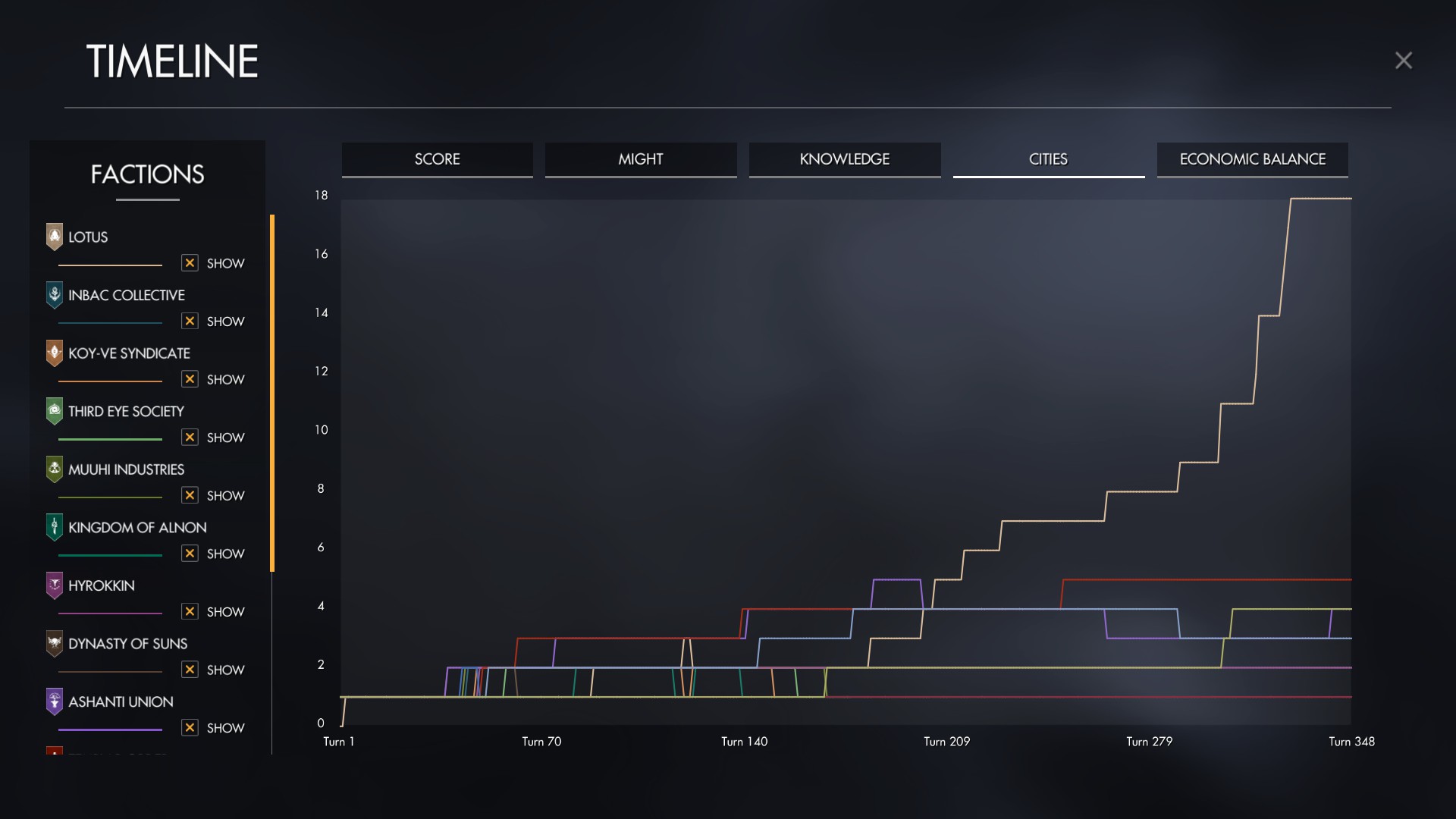
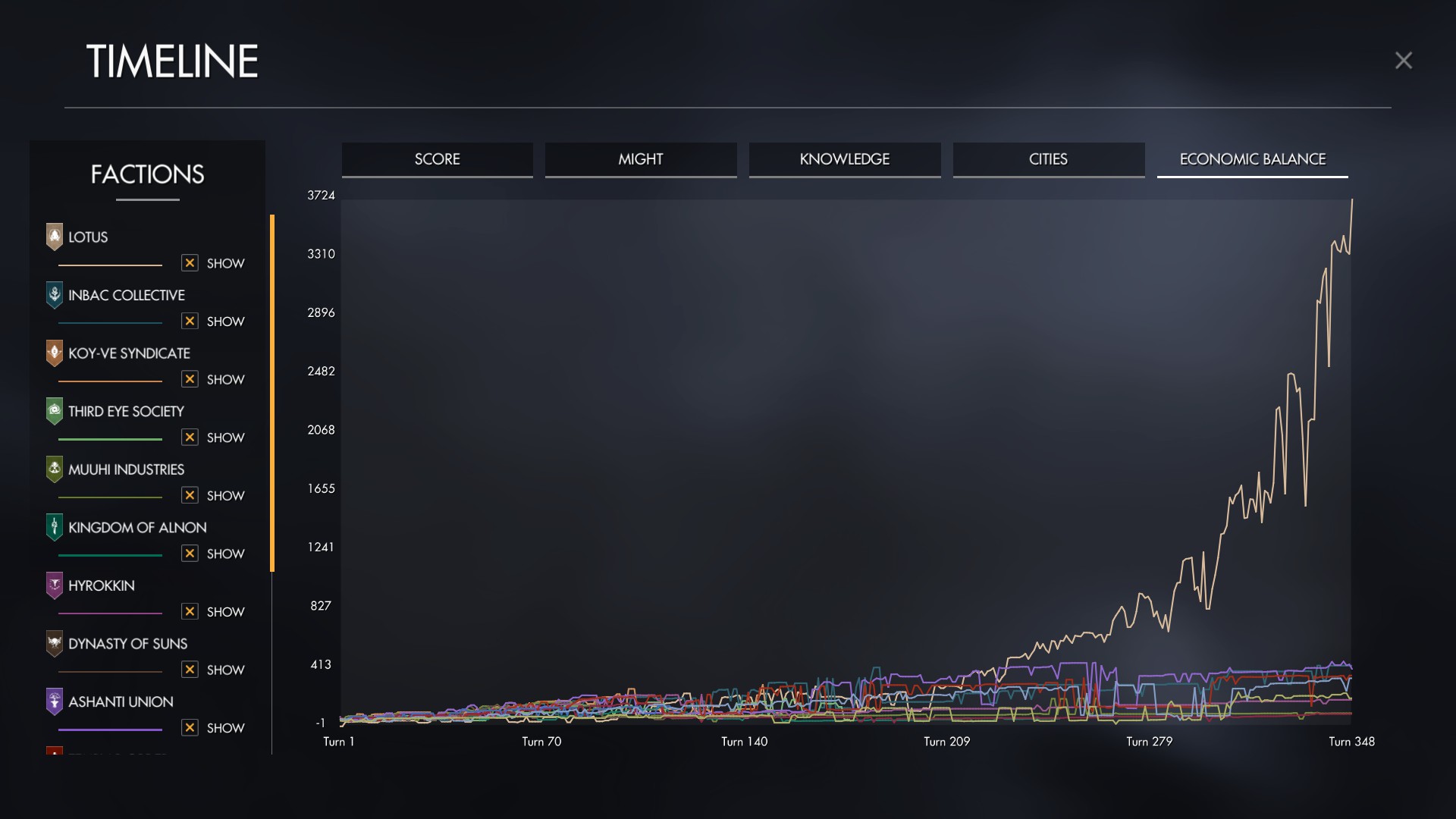
Diplomacy
Diplomacy was fairly disappointing. I didn’t expect anything on the scale of Paradox games, but this was underwhelming nonetheless. Basically, you can use influence to Declare War, Friendship, Praise or Denounce other factions.
Praise and Denounce are basically Influence modifiers for the other party, which increase or decrease your affinity with them.
Alliances, peace treaties, non-aggression agreements and so on are part of the “trade” system. Which is fine in principle, but is rendered meaningless by the economy’s problems.
Internal Politics
Internal politics, too, were a bit disappointing. The biggest problem, to me, is how you don’t have to maintain a city. You can pass various edicts to increase some resources at others’ expense (or sometimes at the cost of money and
influence) or you can choose an over-arching political system. A weird quirk is that changing the political system gives you an “optimism” buff, which encourages changing the political system often – somehow I can’t see that being
a sound choice for a real empire! I suppose revolutions are accompanied by some morale gains, but that may be due to the overthrow of a bad political system rather than the novelty of a new one. Anyway …
City maintenance is largely about controlling Prosperity (how many citizens your city gets, which determines how many districts you can sustain) and Harmony (how often the city’s border expand). Prosperity, especially, is extremely
important early on, and likely the reason why I lost my first game – I didn’t understand how to affect it at all.
But the thing is that the system is exclusively focused on growth. Once you have more citizens than city-cells, you can have heavy food shortages and high pollution without any penalty, really.
This may be a good thing when the number of cities gets too high, but feels rather unsatisfying, to me.
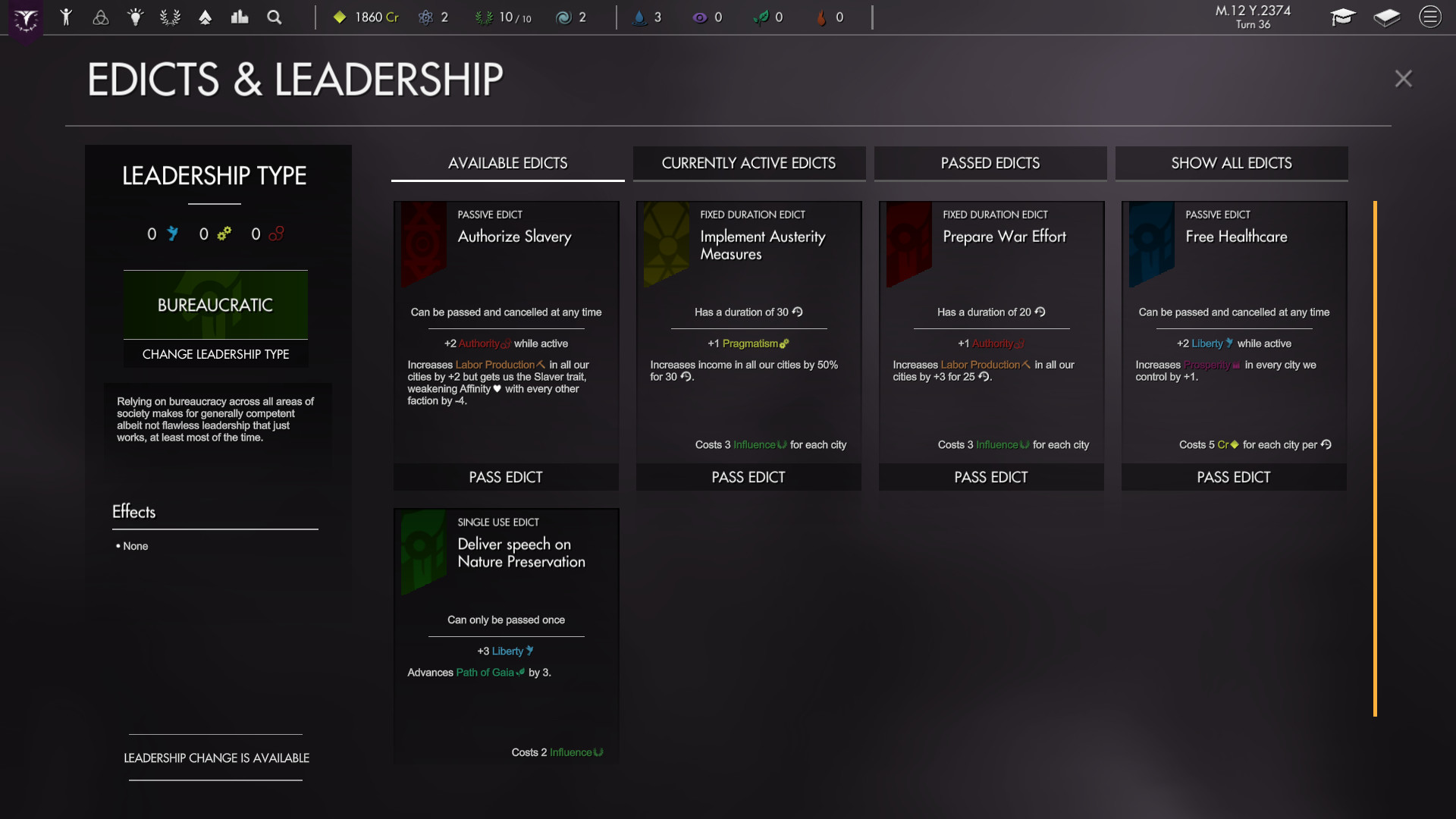
Combat
Combat in Pax Nova has an initial phase with ground units clearing planets of weak monsters and nests and investigating “points of interest”. This is fine, and it adds some variety to the early game while your cities are still
too small and your cities too weak.
Once you get onto full-on war, however, it became a lot less interesting. Most units are melee and most units counter-attack. Which means that combat quickly became just about dumping units onto enemy cities without much need for
planning or strategy. This is, again, related to the economy – different units have different costs in terms of money and labor (which affects how many turns they take to deploy). However, with a sufficiently large economy, you can
ignore labor entirely so that every unit takes a single turn to deploy. If money is not a problem, you can just spam outposts (mobile buildings that can be used to build units outside of a city) around enemy cities and spam units
until the enemy capitulates.
The types of units are apparently quite varied, but mostly have the same amount of moves per turn and, as I said before, most are melee-based.
There are different types of weapons and armor which may be optimized in multiplayer, but they didn’t really play any role in my game.
Space
Ok, finally, there’s space. This is supposedly the highlight of the game, what distinguishes from most other land-based 4X games. What role does it play?
Well, not as much as you’d expect. Space is largely identical to land-based gameplay, except that you don’t create space cities. Instead of tanks you must build space ships. Instead of city mines you build mining ships, and so on.
You can establish space outposts to create units more easily. Other than that, you move ship around to explore the galaxy and find where other planets are, and there are also “points of interest” and creatures or pirates to kill.
Overall, space is like a hub world for the planets. It doesn’t add anything qualitatively different to the game.
Pax Nova is a two-layer 4X game, but the space-layer is a poorer version of the land-layer.
You can attack planets from the outside by sending ships to land on it, but you can’t control where you land, ships move rather slow on land, and seemed weaker than ground units, for the most part. So it doesn’t seem to be a viable
strategy to attack planets from the outside.
Mostly, I used the space-layer to find new planets (empty or with other factions) and settle there before starting a war.
There wasn’t any large scale space battles or anything. There wasn’t any grand scale building in space, or interesting technology.
It more or less replicated the land systems with somewhat lesser detail.
That said, it still seems to change the structure of the game in a fairly fundamental way. Instead of a single game “board”, you now have many. This can make it easier or harder to attack certain factions.
It would be too early to dismiss the space component as a gimmick – it doesn’t bring anything truly new to the table, as far as I can tell, but it may still change how the game is played in practice!
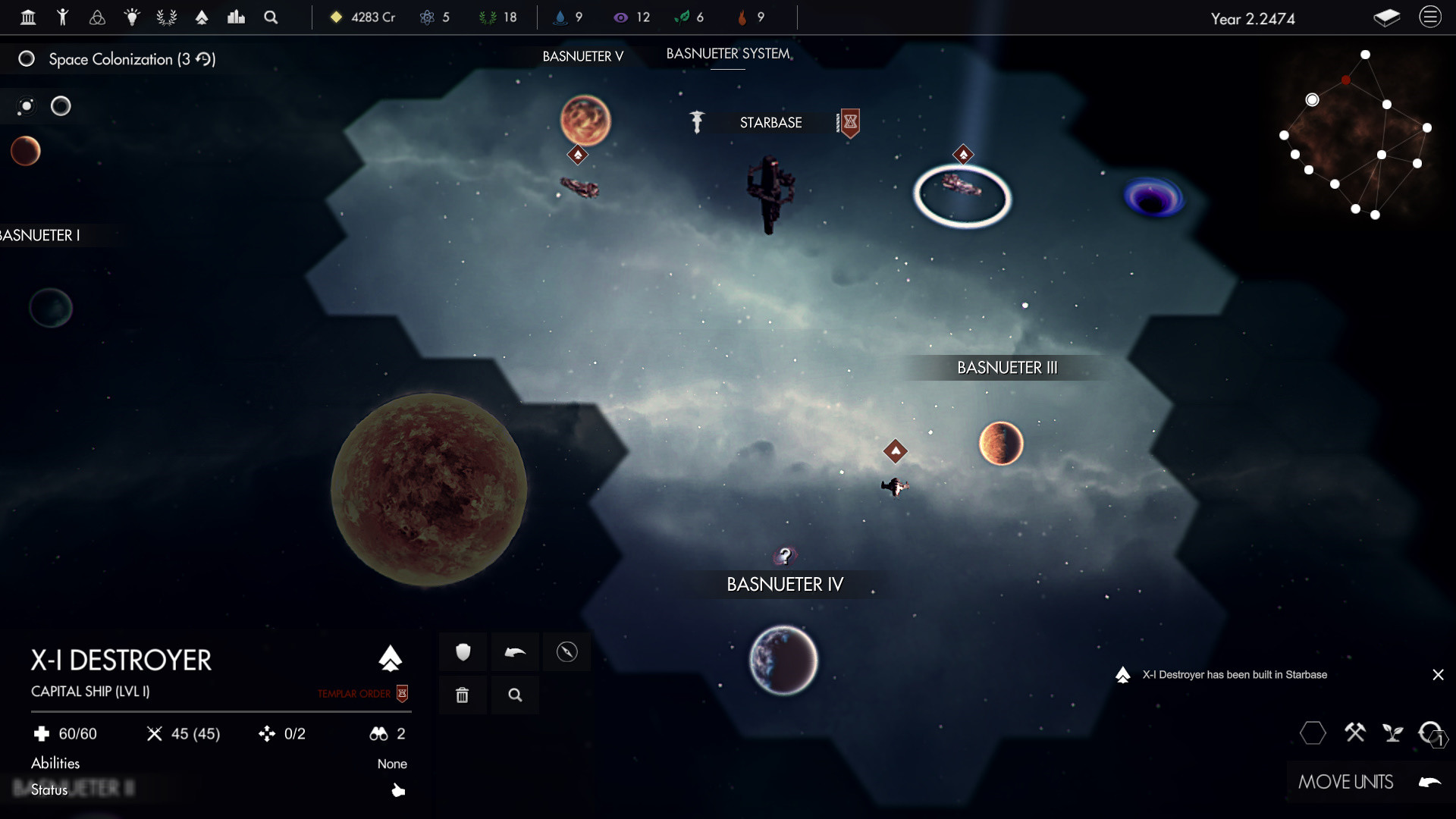
Conclusion
The easiest way to describe Pax Nova is as a 2-layer 4X game. Instead of a single game board, you now have many, combined with a hub-like space layer.
There are some balance problems when playing against the AI, but several or those may not matter at all in multiplayer.
I have essentially no experience in the genre, so the nuances of gameplay (compared to other games) likely went completely over my head. That said, I enjoyed learning the game.
If you have some curiosity about the genre, you can probably enjoy Pax Nova. If you are a veteran of the genre, I’d encourage you to look elsewhere for a more appropriate review.
Pax Nova doesn’t seem to shake the foundations of 4X games, but it is still an enjoyable experience.










